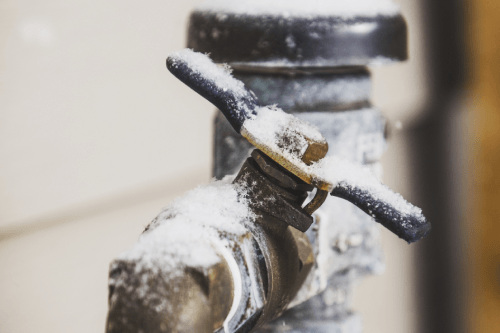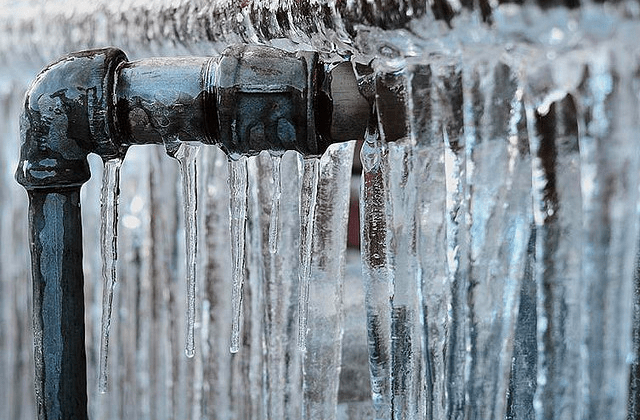Important Advice to Avoid Frozen Pipes in Cold Weather: Expert Insights
Important Advice to Avoid Frozen Pipes in Cold Weather: Expert Insights
Blog Article
The article below relating to 6 Ways to Prevent Frozen Pipes is fairly attention-grabbing. Don't miss it.

Cold weather can damage your plumbing, particularly by freezing pipes. Here's just how to stop it from taking place and what to do if it does.
Introduction
As temperatures drop, the threat of frozen pipelines boosts, potentially resulting in costly fixings and water damage. Understanding just how to prevent frozen pipelines is crucial for house owners in cool climates.
Avoidance Tips
Shielding susceptible pipelines
Cover pipes in insulation sleeves or use warm tape to shield them from freezing temperature levels. Concentrate on pipes in unheated or exterior areas of the home.
Home heating strategies
Maintain indoor rooms sufficiently heated up, especially areas with plumbing. Open cupboard doors to permit warm air to flow around pipelines under sinks.
How to identify frozen pipelines
Search for decreased water circulation from taps, uncommon odors or noises from pipelines, and noticeable frost on revealed pipelines.
Long-Term Solutions
Architectural changes
Take into consideration rerouting pipelines far from outside wall surfaces or unheated locations. Add extra insulation to attics, cellars, and crawl spaces.
Updating insulation
Purchase premium insulation for pipes, attics, and walls. Proper insulation aids preserve consistent temperature levels and decreases the risk of icy pipes.
Shielding Outside Pipes
Yard pipes and outdoor taps
Disconnect and drain pipes yard pipes prior to wintertime. Mount frost-proof spigots or cover exterior taps with shielded caps.
Comprehending Icy Pipelines
What causes pipelines to ice up?
Pipes freeze when revealed to temperature levels listed below 32 ° F (0 ° C) for expanded durations. As water inside the pipelines freezes, it expands, putting pressure on the pipe walls and potentially causing them to burst.
Risks and damages
Icy pipelines can cause water disturbances, home damage, and expensive fixings. Ruptured pipelines can flooding homes and trigger considerable architectural damage.
Indicators of Frozen Pipeline
Identifying frozen pipes early can stop them from breaking.
What to Do If Your Pipelines Freeze
Immediate actions to take
If you suspect icy pipelines, keep taps available to ease pressure as the ice thaws. Utilize a hairdryer or towels taken in hot water to thaw pipelines slowly.
Conclusion
Protecting against frozen pipelines requires aggressive actions and quick feedbacks. By understanding the reasons, signs, and preventive measures, home owners can safeguard their pipes throughout cold weather.
5 Ways to Prevent Frozen Pipes
Drain Outdoor Faucets and Disconnect Hoses
First, close the shut-off valve that controls the flow of water in the pipe to your outdoor faucet. Then, head outside to disconnect and drain your hose and open the outdoor faucet to allow the water to completely drain out of the line. Turn off the faucet when done. Finally, head back to the shut-off valve and drain the remaining water inside the pipe into a bucket or container. Additionally, if you have a home irrigation system, you should consider hiring an expert to clear the system of water each year.
Insulate Pipes
One of the best and most cost-effective methods for preventing frozen water pipes is to wrap your pipes with insulation. This is especially important for areas in your home that aren’t exposed to heat, such as an attic. We suggest using foam sleeves, which can typically be found at your local hardware store.
Keep Heat Running at 65
Your pipes are located inside your walls, and the temperature there is much colder than the rest of the house. To prevent your pipes from freezing, The Insurance Information Institute suggests that you keep your home heated to at least 65 degrees, even when traveling. You may want to invest in smart devices that can keep an eye on the temperature in your home while you’re away.
Leave Water Dripping
Moving water — even a small trickle — can prevent ice from forming inside your pipes. When freezing temps are imminent, start a drip of water from all faucets that serve exposed pipes. Leaving a few faucets running will also help relieve pressure inside the pipes and help prevent a rupture if the water inside freezes.
Open Cupboard Doors
Warm your kitchen and bathroom pipes by opening cupboards and vanities. You should also leave your interior doors ajar to help warm air circulate evenly throughout your home.

As a devoted reader about 6 Ways to Prevent Frozen Pipes, I figured sharing that post was valuable. So long as you liked our blog entry plz do not forget to share it. I truly appreciate your readership.
More Details Report this page